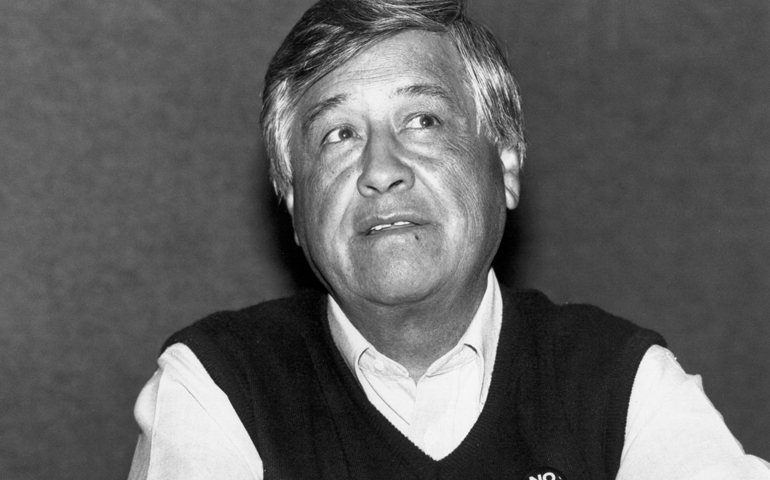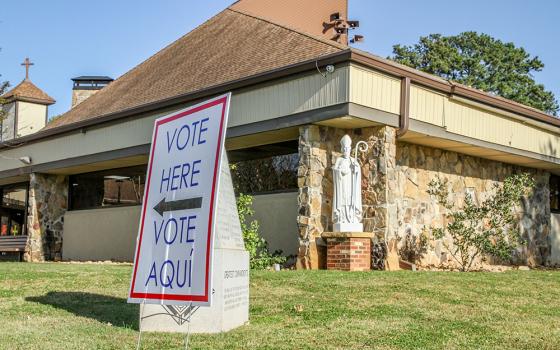
Cesar Chavez (CNS file photo)
March 31 marks the birthday of César Chávez. Besides the celebrations and events that are planned for this year (and they are still unfortunately not widespread), this birthday will also see the distribution of the first feature-length film on Chávez.
The film, simply titled "César Chávez," opened Friday in some 600 theatres nationwide and brings attention to the life of a remarkable American leader in a way no book or documentary on him can do. The film will probably not be a blockbuster, yet millions will see it in this country as well as in many other countries.
Produced by a Mexican film company and with a Mexican director, the film focuses on the key period of the farmworkers' struggle to unionize through the United Farm Workers. Chávez began the historic movement, which also lobbied to successfully sign contracts with big California growers.
Starting in 1962, Chávez, a child of farmworkers and a farmworker himself, began the difficult effort to organize farmworkers in the rich agricultural San Joaquin Valley of California. This was not an easy task: Earlier efforts to unionize farmworkers were always defeated by the big growers, who would use violence and strike-breakers in the form of the braceros (contract workers from Mexico) and undocumented immigrants. Moreover, because of the different picking seasons, farmworkers were migratory, which posed another difficulty in organizing them.
All this did not daunt César Chávez, who always believed such unionization was possible -- hence his mantra, "Si, se pude" ("It can be done"). And he did it. Aided by a strong nucleus of supporters, including his wife, Helen, and the indomitable Dolores Huerta along with the courage of the farmworkers and their families, the union was formed, and in 1965, it joined Filipino workers in the commencement of the now-famous grape strike and grape boycott that lasted five long years, the longest agricultural strike in American history.
The strike was characterized by the use of Catholic-influenced rituals, including peregrinacíones, or pilgrimages, to spiritually prepare the farmworkers for the long struggle; the employment of religious figures, such as the image of Our Lady of Guadalupe, and other Mexican historical symbols, such as the use of the Mexican eagle on the Mexican flag on the United Farm Workers' banner; and the various fasts Chávez undertook, highlighted by his 25-day fast in early 1968 to, in part, remind the strikers of their allegiance to nonviolence. These references to Mexican Catholic practices and Mexican nationalistic symbols were all intended to stress to the largely Mexican immigrant and Mexican-American farm workers that the United Farm Workers was their union, and it related to them and their needs. Chávez and the union were not outsiders, but one of them. All this proved to be highly successful.
In part, the struggle succeeded because of Chávez's brilliant leadership and his deep commitment to La Causa, or the cause of the farmworkers. This cause was not just to improve the salaries and working and living conditions of the workers that, of course, needed to be remedied, but above all, to bring human dignity to them. Chávez often stressed that the struggle was not just for material gains, but to bring human dignity and social justice to the workers. This commitment was very much the result of César Chávez's deep Catholic spirituality; it was his faith that guided and sustained him not only those five years that led to the signing of contracts, but for many years afterward, until his death in 1993. César Chávez was not only a major American historical figure of the late 20th century, but one of the great spiritual leaders in American history.
It will be interesting to see how the film will depict the many aspects of César Chávez. I will review the film once I have seen it. In the meantime, I encourage my readers to see the film that is about American history and about one of the great Catholic figures in this country.



